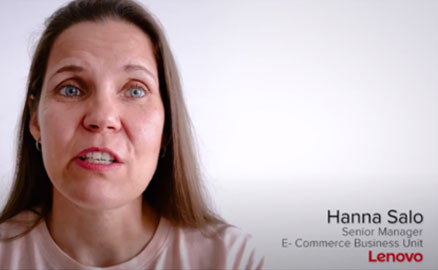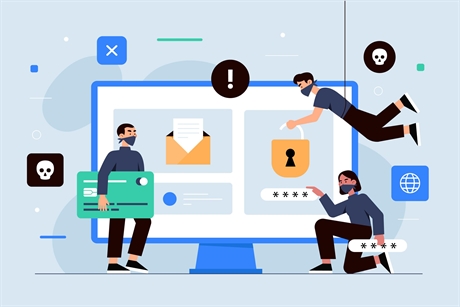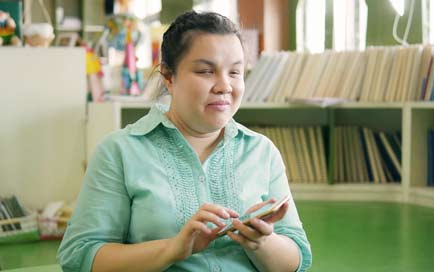Thus, the impact of disability is radically changed on the Web because the Web removes barriers to communication and interaction that many people face in the physical world. However, when web sites, applications, technologies, or tools are badly designed, they can create barriers that exclude people from using the Web.
We were simply, if to be harsh, ignorant to the fact that there are so many people with other abilities that can’t use the web. Do you grasp that?? Probably if you got sued, or from the community or with other abilities – you know what im referring to in this article. Can you imagine the frustration of a person that goes on your website, hits the TAB and nothing is happening for him?? Complete nothing!
The Web must be accessible to provide equal access and equal opportunity to people with diverse abilities. And so, access to information and communications technologies, including the Web, is recognized as a basic human right.
Accessibility supports social inclusion for people with disabilities as well as others, such as older people, people in rural areas, and people in developing countries.
According to the CDC (Centers for Disease Control & Prevention) 61 million adults in the united states alone live with a disability. 26% of adults in the united states have some type of disability.
BUT The W3C came a long and slowly brought A - wareness! Through specific guidelines.
They have 12-13 guidelines that are organized under 4 principles:
- Perceivable - Available to the senses (vision and hearing primarily) either through the browser or through assistive technologies (e.g. screen readers, screen enlargers, etc.)
- Operable - Users can interact with all controls and interactive elements using either the mouse, keyboard, or an assistive device.
- Understandable - Content is clear and limits confusion and ambiguity.
- and robust - A wide range of technologies (including old and new user agents and assistive technologies) can access the content.
For each guideline, there are testable success criteria, which are at three levels: A, AA, and AAA.
Back in the “old days,” the Internet was a lot like the Wild West. There were few standards for coding, page design, and browser compatibility. Many different web browsers vied for market dominance. And with the lack of standards, most websites did not work well with all browsers. If you needed information from a web site that didn’t work on your browser, you either had to buy a different browser or get that information elsewhere.
Fortunately, along came the World Wide Web Consortium (W3C) to bring some law and order to the wild cyber-frontier. The W3C is an international community of member organizations that articulates web standards.
The problem is that many programmers, as to date, do not follow those basic guide lines to begin with. Those that do, will forgive me – you are blessed!
Accessibility is essential for developers and organizations that want to create high quality websites and web tools, and not exclude people from using their products and services.
Why Investing in Web Accessibility Matters?People with disabilities are the largest minority group in the world. There is over a billion people (15% of world population) around the world who have some form of disability,3 and 1 in 5 people self-identify as having a disability.
Yet, many organizations view accessibility as a chore rather than an opportunity. Thus, leaving many digital marketers in the dark about the benefits of inclusive digital assets.
Investing in disability and completing the web accessibility checklist has its fair share of returns. That’s a fact.
Firstly, organizations have the opportunity to enhance the digital customer experience for the largest minority group around the world. Research shows that 86% of buyers will pay more for a better customer experience, and the statistic is just as relevant for people with disabilities. When it comes to disability, making a website accessible goes a long way in achieving that goal.
Secondly, by enhancing the customer experience, and making the website easy to use for people with disabilities, companies can begin to build a disability-friendly brand presence, which results in brand loyalty and repeat business from the disability market segment.
It should go without saying, that offering an inclusive web accessibility solution to customers with disabilities, by integrating a suite of assistive technologies alongside accessibility compliance, will enhance the digital customer experience. In return, an organization can expect to create an inclusive digital presence and make its brand accessible to all.
An Innovative SolutionEqualWeb has developed, over the past 5 years, a comprehensive web accessibility solution to help organizations follow the Web Content Accessibility Guidelines (WCAG) and achieve and maintain compliance with standards and regulations. This includes integrating web accessibility evaluation services with assistive technology to deliver a transformative experience for people with disabilities.
Anat Cohen, VP B.D. & General Manager
References: Internet stats & facts for 2019 - hostingfacts.com
World Health Organization - www.cdc.gov
Web content Accessibility guidelines - www.w3.org



